Srinagar Gardens:
In this series, our first stop was to Chashme Shahi Garden. Chashme Shahi originally derives its name from the spring which was discovered by the great female saint of Kashmir, Rupa Bhawani, who was from the Sahib clan of Kashmiri Pandits. The family name of Rupa Bhawani was ‘Sahib’ and the spring was originally called ‘Chashme Sahibi’. Over the years the name got corrupted and today the place is known as Chashme Shahi (the Royal Spring) (source Wikipedia)

The garden was constructed around the spring by the Mughal Governor Ali Mardan Khan in 1632. It was commissioned by the Mughal emperor Shah Jahan for his eldest son, Dara Sikoh. In the east of Chashma Shahi the Pari Mahal (Fairy Palace – our next stop) lies where Dara Sikoh used to learn astrology and where he was later killed by his brother Aurengzeb. The garden is 108 m long and 38 m wide and is spread over one acre of land. It is the smallest garden among the three Mughal gardens of Srinagar; the Shalimar garden is the largest and the Nishat garden is the second largest. All the three gardens were built at the left bank of the Dal Lake, with Zabarwan mountains at the backdrop. (source Wikipedia and ASI)
I will bring pictures and tales of all three gardens to you one by one. First, let’s have a look at Chashma Shahi …..

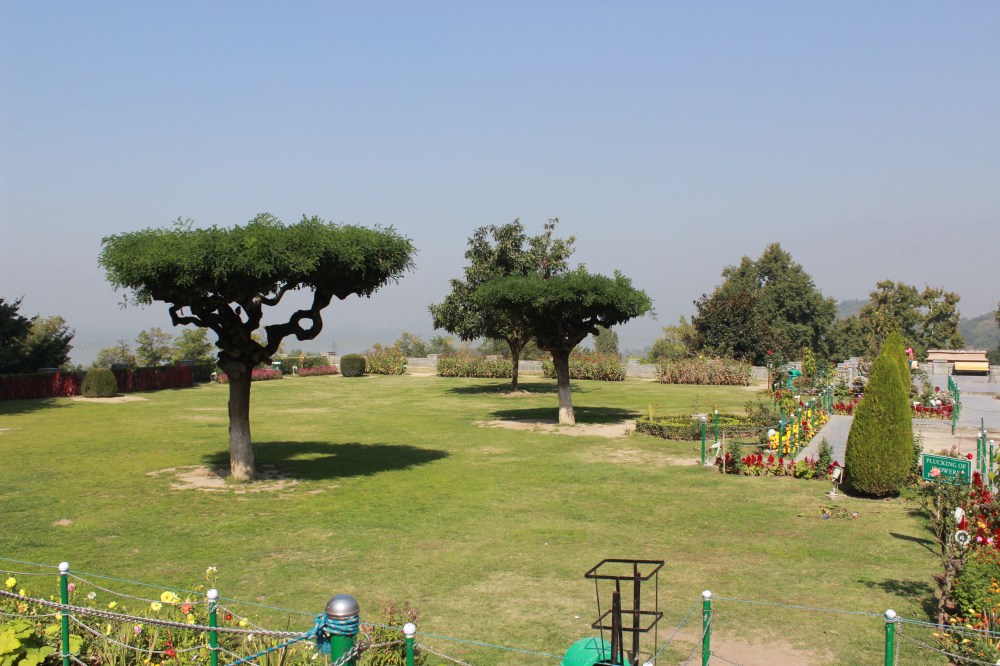
the spring still exists and people drink from here. we did too, the water is cool and sweet.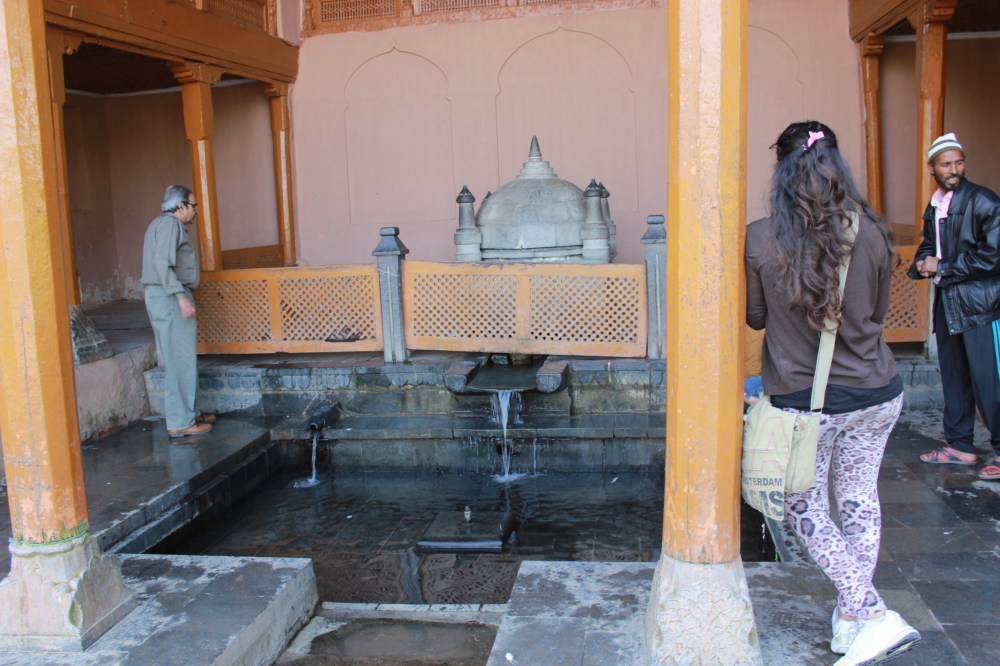

 the path and the Zabarwan mountain range at the back …. it is a pretty place. Can’t imagine how the Mughals did any work in this pretty place 🙂
the path and the Zabarwan mountain range at the back …. it is a pretty place. Can’t imagine how the Mughals did any work in this pretty place 🙂 
 the rose garden
the rose garden 
our next step was Pari Mahal which was build by Dara Shikoh under the patronage of his father, the then Mughal emperor Shah Jahan. The gardens were established by Prince Dara Shikoh in the mid-1600s on the ruins of a Buddhist monastery. Dara, the son of Emperor Shah Jahan, followed the Qadiri order of Sufi Islam and made the garden for his tutor. It was further used as an observatory, useful for teaching astrology and astronomy. The gardens have since become the property of the Srinagar government, and currently houses the paramilitary force. Sadly some of the fountains are full of plastic bottles with greenish dirty water.
Pari Mahal entrance and the board by ASI

We then entered Pari Mahal at the third level which is at the road level.

Since Pari Mahal is built in layers, one has go up, come down and go around to enjoy the beauty of this place. What I enjoyed was the absolute silence of the place with cool breeze flowing from the lake, although the sun was quite harsh on top, at mid day.



One feels sad to think that Dara Shikoh was apparently killed by Aurangzeb in this beautiful place. I do have a bit of soft corner for the romantic, sufi lover Dara, aided and abated by written history of course!



On another note, many of the historical structure (like Pari Mahal) and the one below called Hari Parbat Fort (in the name of Hari Singh, the erstwhile Maharaja of Kashmir) are occupied by the paramilitary force and we could not visit the Hari Parbat fort. the photo below is taken from Jama Masjid courtyard.

Shalimar Bagh: (all information courtesy Wikipedia and ASI)
Shalimar Bagh is linked through a channel to the northeast of Dal Lake, on its right bank located near Srinagar city. The Bagh was built by Mughal Emperor Jahangir for his wife Nur Jahan, in 1619. The Bagh is considered the high point of Mughal horticulture. It is now a public park.
While the recent history and development of the Mughal types of gardens is credited to Emperor Jahangir, the ancient history of the garden can be traced to the 2nd century when it was built during the reign of Pravarsena II.
Praversena II founded the city of Srinagar and ruled in Kashmir from 79 AD to 139 AD. He had built a cottage for his stay at the northeastern corner of the Dal Lake and had named it Shalimar . The word “Shalimar ” in Sanskrit means abode of love. The king, on his visits to a local saint by the name Sukarma Swami at Harwan, used to stop at this cottage. Over the years, the cottage fell into ruins and later could not be located. However, the name of the village remained as Shalimar.
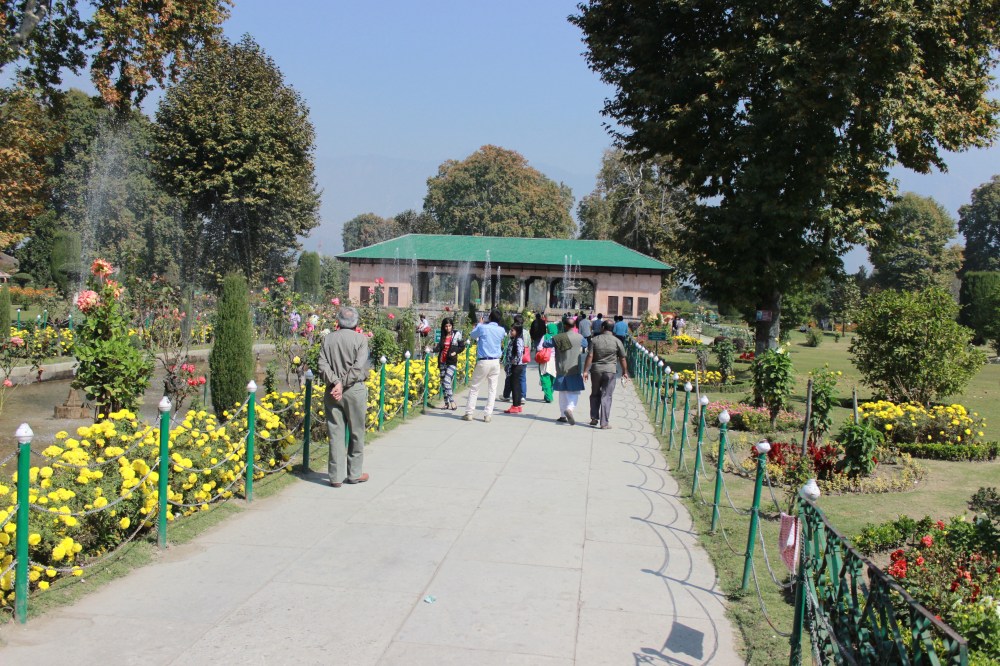

It is here that Emperor Jahangir built his celebrated Shalimar Bagh, his dream project to please his queen. In 1630, under Emperor Shah Jahan’s orders, Zafar Khan the governor of Kashmir got it extended. He named it ‘Faiz Baksh’ (‘the bountiful’). It then became a pleasure place for the Pathan and Sikh governors who followed Zafar Khan.
During the rule of Maharaja Ranjit Singh the marble pavilion was the guest house for European visitors. Electrification of the premises was done during Maharaja Hari Singh’s rule. Thus, over the years, the garden was extended and improved by many rulers and called by different names, but the most popular name ‘Shalimar Bagh’ continues to this day.

Julie Scott Meisami describes the medieval Islamic garden as “a hortus conclusus, walled off and protected from the outside world; within, its design was rigidly formal, and its inner space was filled with those elements that man finds most pleasing in nature. Its essential features included running water (perhaps the most important element) and a pool to reflect the beauties of sky and garden; trees of various sorts, some to provide shade merely, and others to produce fruits; flowers, colorful and sweet-smelling; grass, usually growing wild under the trees; birds to fill the garden with song; the whole cooled by a pleasant breeze. The garden might include a raised hillock at the center, reminiscent of the mountain at the center of the universe in cosmological descriptions, and often surmounted by a pavilion or palace.

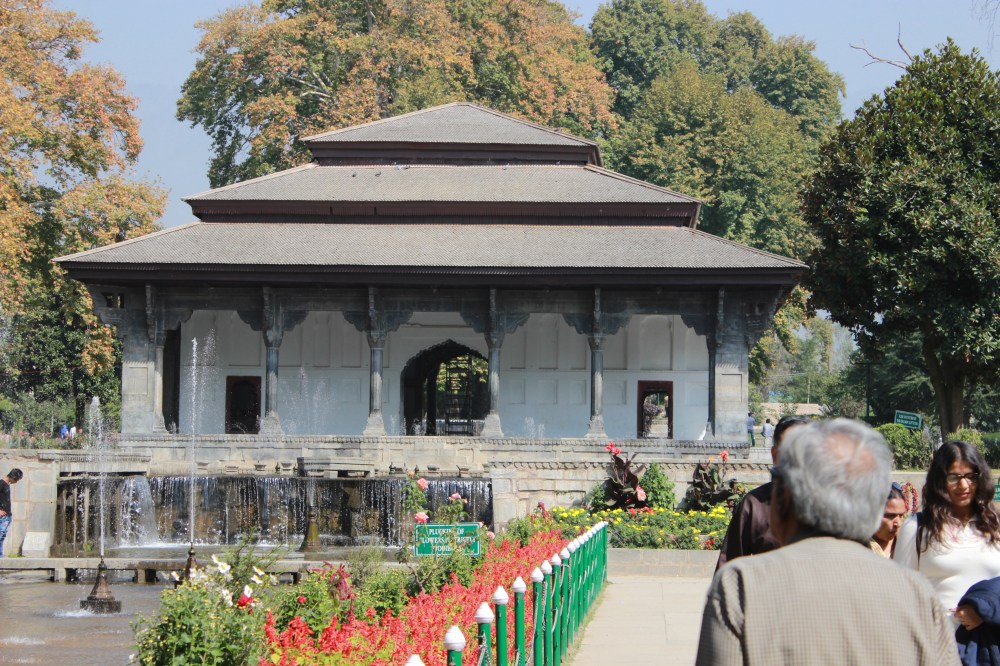
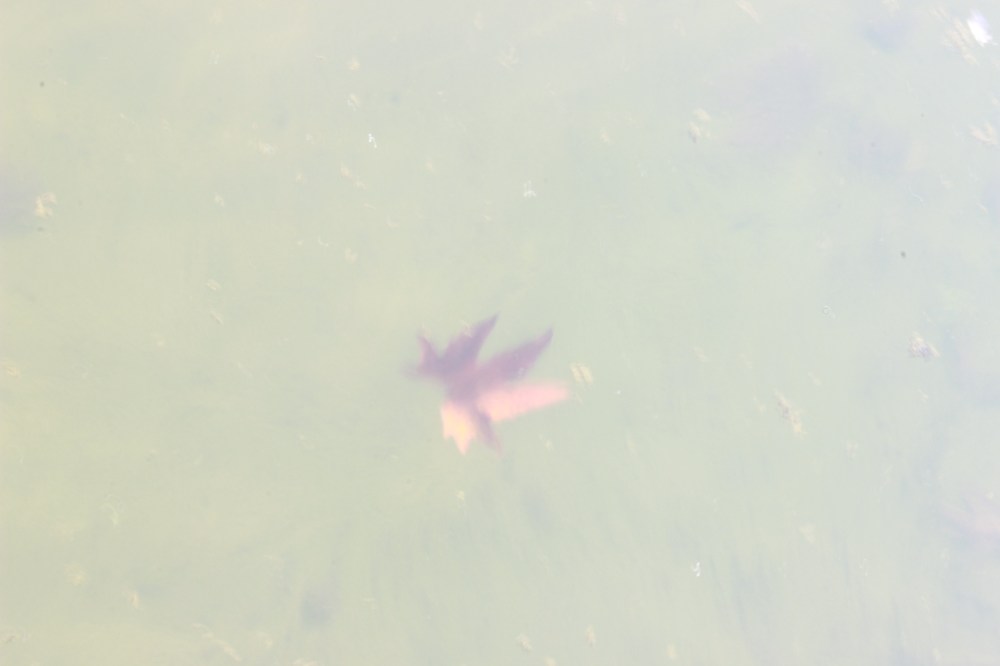

The Mughals were obsessed with symbol and incorporated it into their gardens in many ways. The standard Quranic references to paradise were in the architecture, layout, and in the choice of plant life; but more secular references, including numerological and zodiacal significances connected to family history or other cultural significance, were often juxtaposed. The numbers eight and nine were considered auspicious by the Mughals and can be found in the number of terraces or in garden architecture such as octagonal pools.
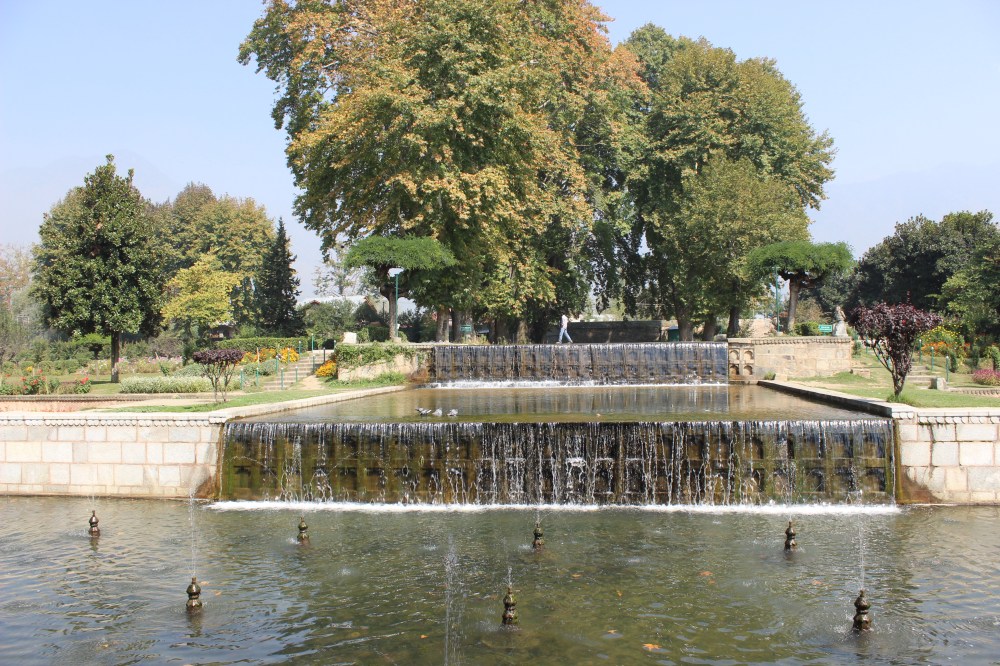


 the chinar trees …. the leaves have started changing colour for autumn, till they become red and fall off ….
the chinar trees …. the leaves have started changing colour for autumn, till they become red and fall off …. 







And the last garden was Nishat Garden. We visited these gardens on different days, but for your viewing pleasure, bringing them all together 🙂
Nishat Bagh: is a garden of bliss that commands a magnificent view of the lake beneath the snow-capped Pir Panjal mountain range that stands far away to the west of the valley. The Bagh was designed and built in 1633 by Asif Khan, elder brother of Nur Jehan.[2][3][4]
An interesting anecdote of jealousy of the Emperor Shah Jahan on beholding such a delightful garden, which almost shutdown the garden for some time, is narrated. When Shah Jahan saw this garden, after its completion in 1633, he expressed great appreciation of its grandeur and beauty. He is believed to have articulated his appreciation three times to Asif Khan, his father-in- law, with the hope that he would gift it to him. As no such offer was made by Asif Khan, Shah Jahan was piqued and ordered closure of the water supply to the garden. Then, for some time, the garden was deserted. Asif Khan was desolate and heartbroken; he was uninterested in the sequence of events. When he was resting under the shade of a tree, in one of the terraces, his servant was bold enough to turn on the water supply source from the Shalimar Bagh. When Asif Khan heard the sound of water and the fountains in action he was startled and immediately order closure of water supply as he feared the worst reaction from the emperor for this wanton act of disobedience. Fortunately for the servant and Asif Khan, Shah Jahan, who had heard about this incident at the garden, was not disturbed or annoyed by the disobedience of his orders. Instead, he appreciated the servant for loyal service to his master and then ordered full restoration rights for the supply of water to the garden to Asif Khan, his Prime Minister and father-in-law.
some story, huh? I kind of liked this garden next to Shalimar Bagh.
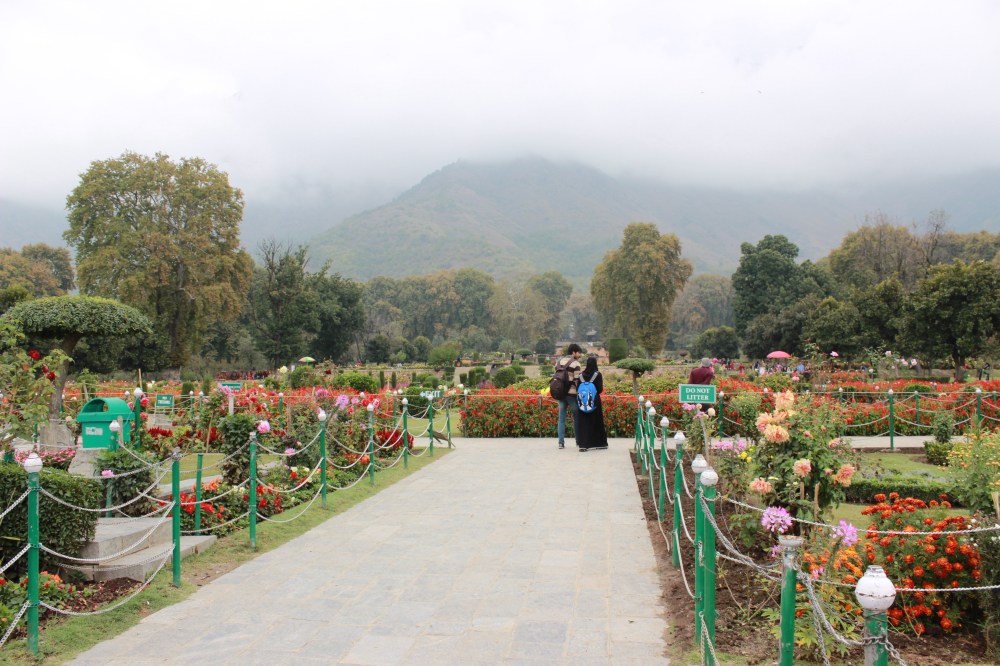




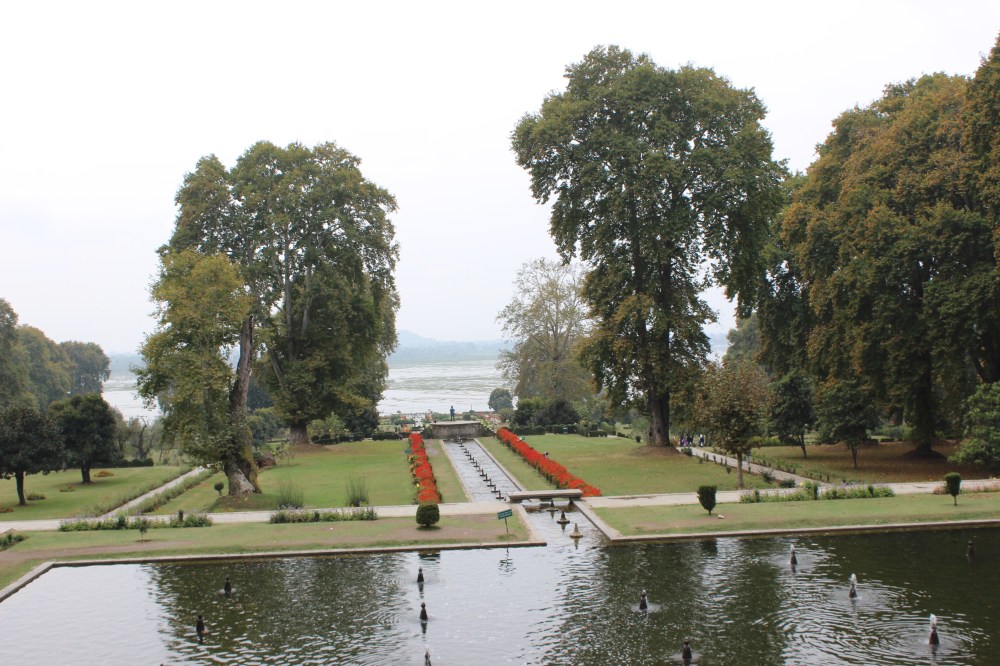



and, thus, we end the tour of the gardens of Sringar. These gardens are beautiful, serene and peaceful places that make you never want to leave.
Sonemarg, which is on the way to Ladakh, will come tomorrow …
do let me know what you thought of these …. cheers!





 this is where the tourists are tempted to dress up like the beautiful Kashmiri women and photograph taken for posterity. I could not do it … there has to be some self respect, no way would I pass as a Kashmiri beauty!
this is where the tourists are tempted to dress up like the beautiful Kashmiri women and photograph taken for posterity. I could not do it … there has to be some self respect, no way would I pass as a Kashmiri beauty!
Beautiful photography with apt description.
You surely possess a good camera.
LikeLike
Thank you Bhaskar. I have a Canon 600d and I think it’s very very good
LikeLike